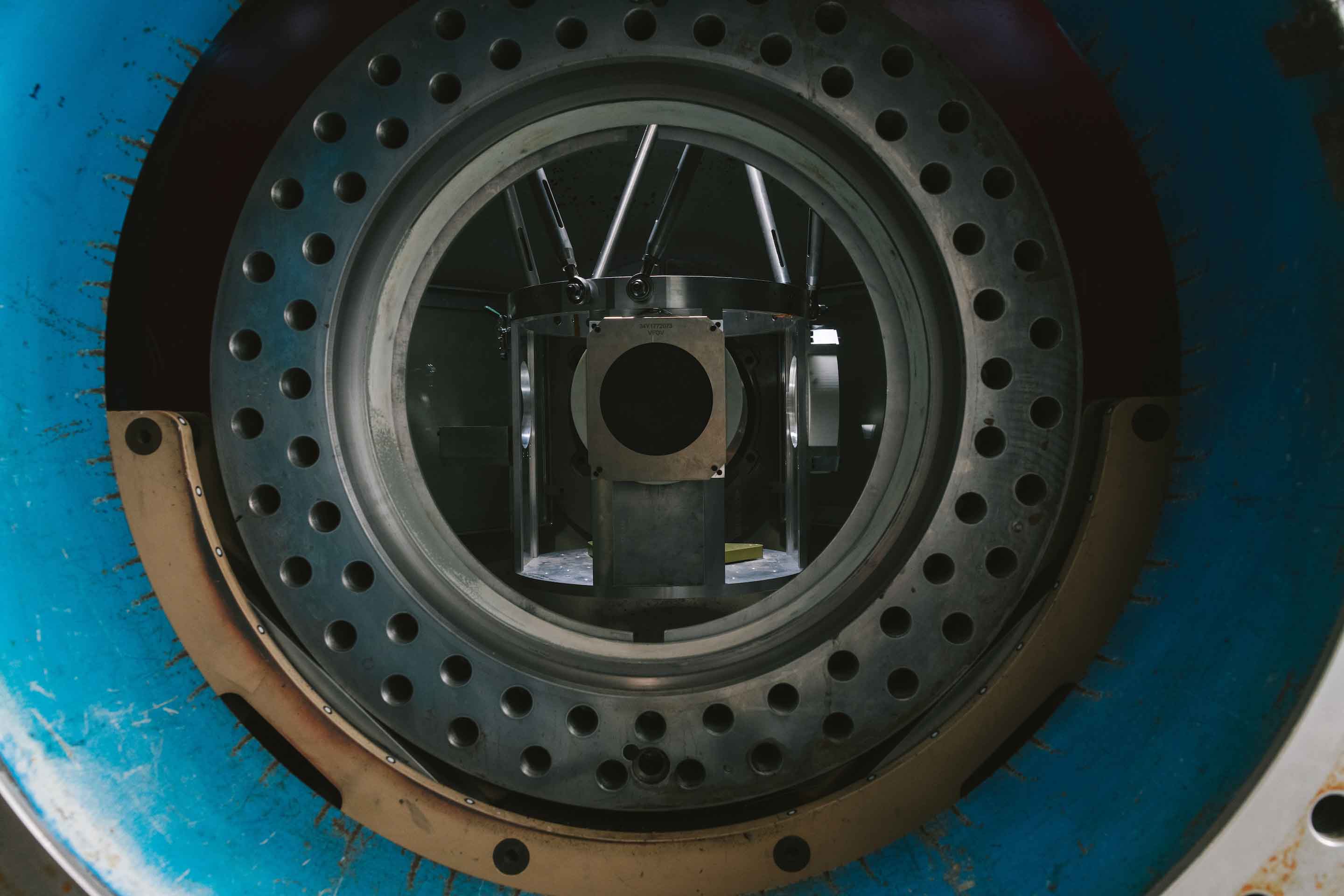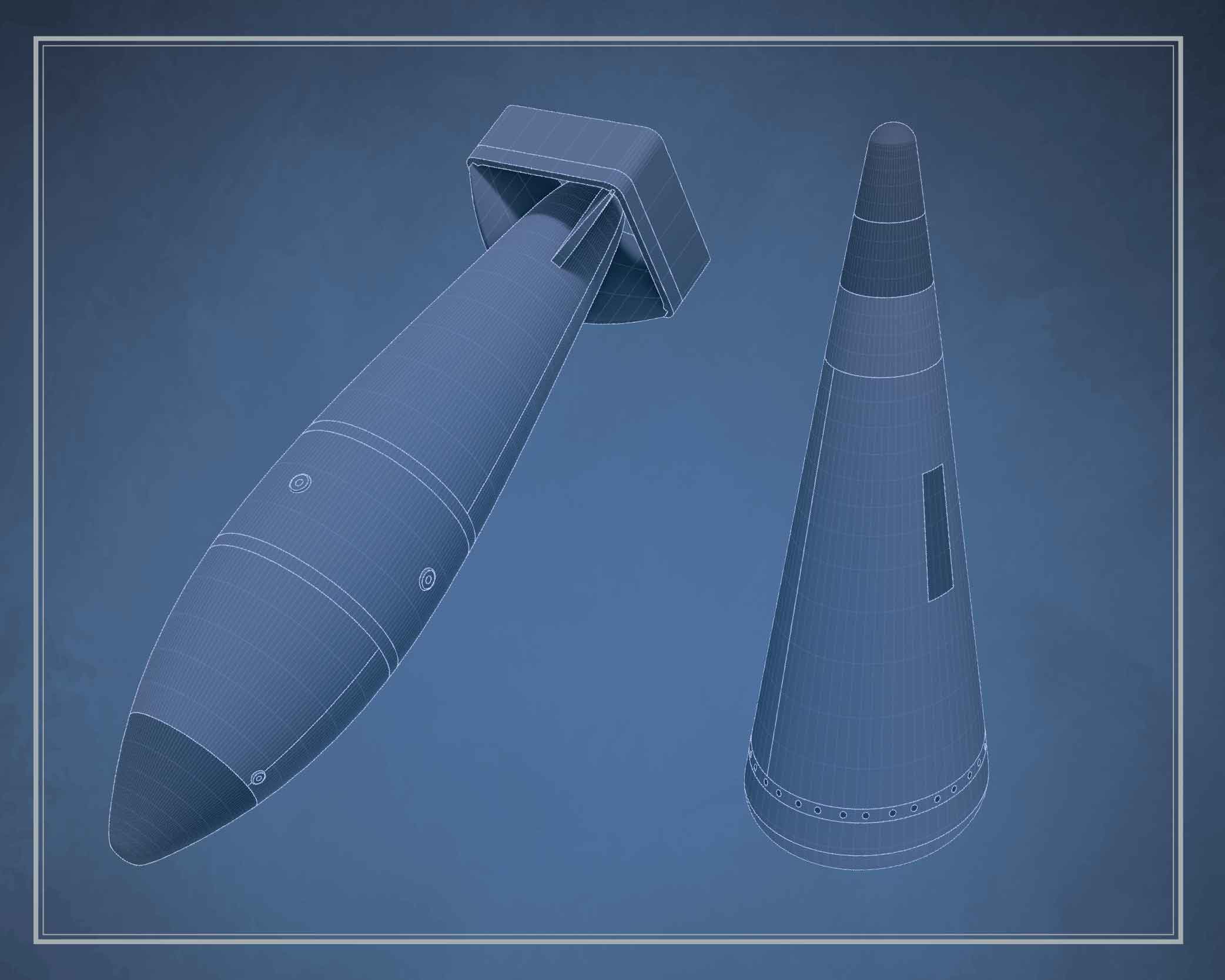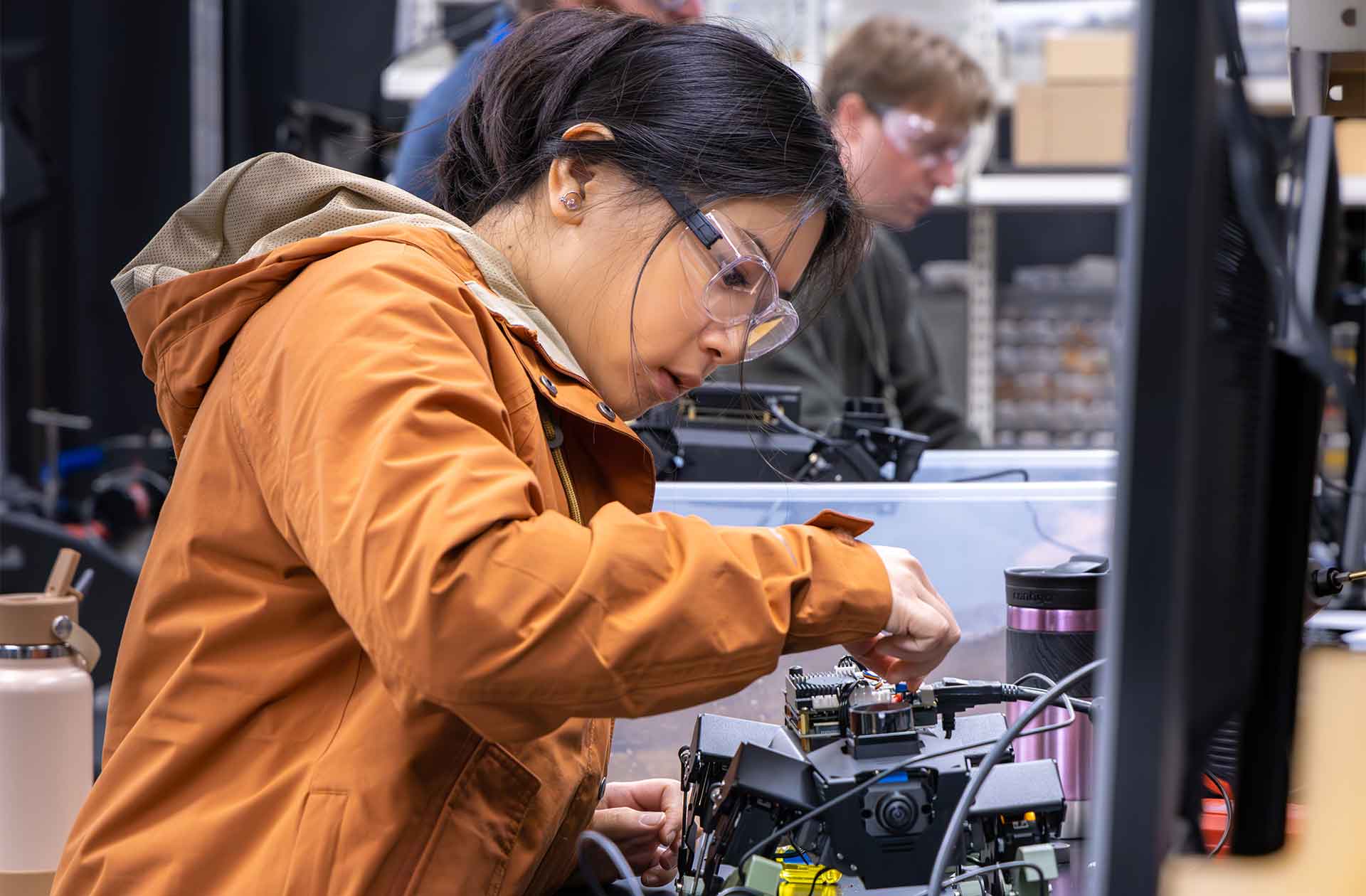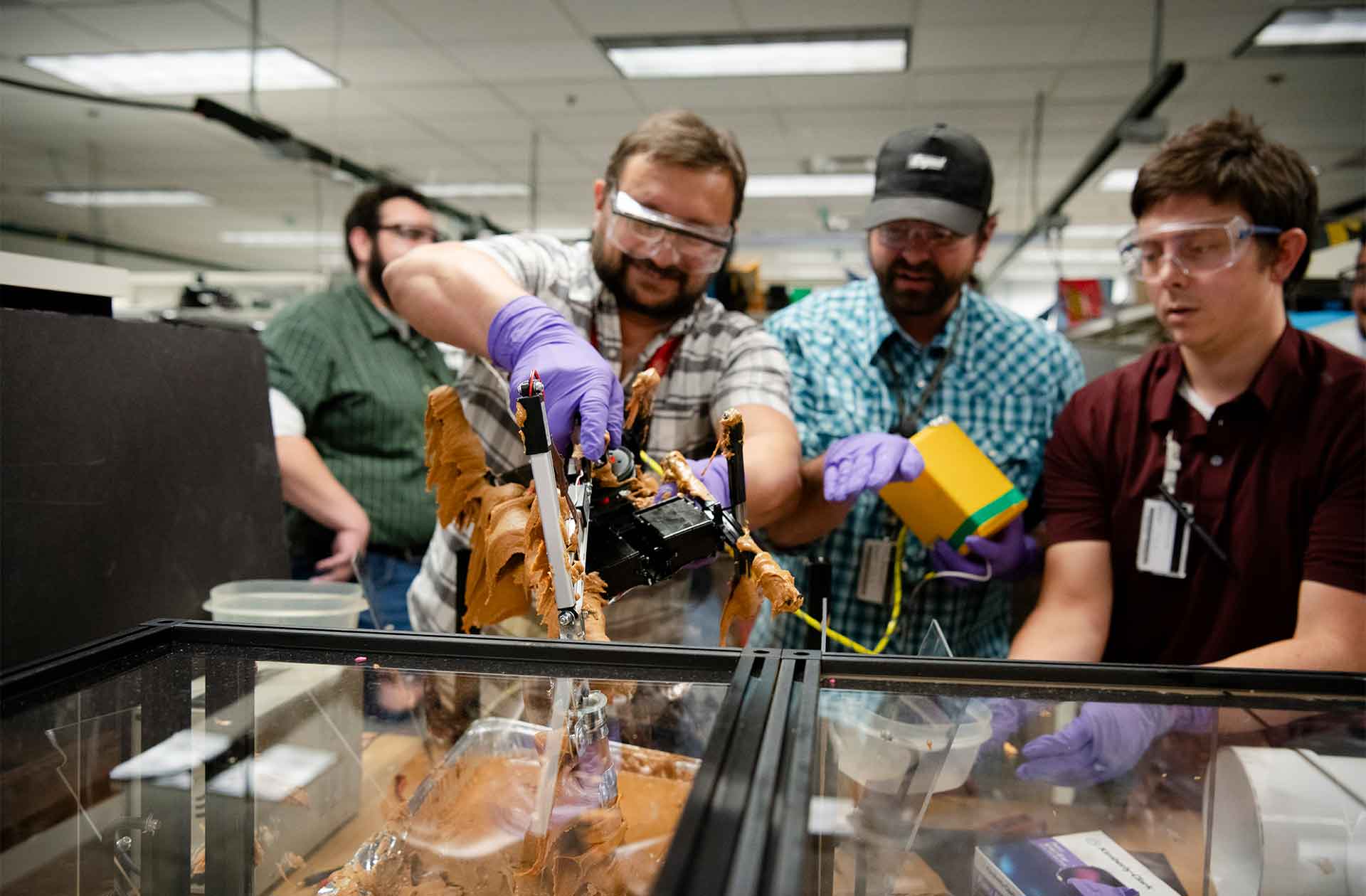Accelerators in space
Los Alamos boldly sends accelerators where few have gone before.
- Jake Bartman, Communications specialist
Particle accelerators come in all sizes, from the 27-kilometer-long Large Hadron Collider outside Geneva, Switzerland, to machines that can fit comfortably into an average-sized room. Although Los Alamos National Laboratory is well-known for its large accelerators (such as the kilometer-long Los Alamos Neutron Science Center), the Laboratory’s expertise extends to compact accelerators, too. Recently, researchers at Los Alamos have been using this expertise to design and build accelerators that are small and durable enough to be deployed in space.
The idea of sending particle accelerators into space isn’t new. In the 1970s, researchers in the United States began exploring the deployment of electron beams in space, and in the 1980s, Los Alamos played an important role in the United States Strategic Defense Initiative, or SDI (commonly referred to as “Star Wars”). As part of SDI, in 1989, the Laboratory sent an accelerator into space for the Beam Experiment Aboard Rocket (BEAR) project, which yielded important data related to compact accelerators and missile defense.

After BEAR, research on the deployment of accelerators in space stalled. That changed in 2023, when Los Alamos, in collaboration with the National Aeronautics and Space Administration (NASA), conducted the Beam-Plasma Interactions Experiment, or BeamPIE.
For BeamPIE, researchers launched into space a compact electron beam accelerator that was designed and built at the Laboratory. The experiment was conducted to study how electron beams produce electromagnetic waves in space and to research new accelerator technologies. These technologies could enable the remediation of radiation belts left in the atmosphere by high-altitude nuclear explosions and solar flares.
Such radiation belts could damage the satellites that are central to national security. Researchers at Los Alamos think that by using a particle accelerator to create waves in the ionosphere (a plasma region above Earth’s atmosphere), it could be possible to cause electrons to precipitate (in a manner akin to drops of water precipitating from clouds) from the radiation belts into the upper atmosphere, reducing or eliminating the belts and making space safe for satellites.
Although the BeamPIE accelerator successfully reached, and injected electrons into, space—significant achievements in their own right—the experiment didn’t detect waves in the ionosphere at the times and frequencies that researchers expected.
“Putting a tiny accelerator on a rocket is really challenging,” says Rebecca Holmes Sandoval, a researcher at Los Alamos. Holmes Sandoval is part of a team that is developing a follow-up experiment to BeamPIE called Beam2PIE. Like the original BeamPIE, Beam2PIE will involve launching a next-generation compact accelerator into space and attempting to produce (and measure) ionospheric waves.

Holmes Sandoval says that in addition to the shocks and vibration to which an accelerator is exposed during a rocket launch, there are challenges related to the high-voltage power sources that the Beam2PIE accelerator will use in space (where the low ambient pressure can cause electricity to arc, or jump between the power source’s connections). Fortunately, the Laboratory has experience addressing obstacles like these, having developed power sources for the Curiosity and Perseverance rovers, which are exploring Mars.
Using an accelerator in space is challenging for other reasons, too. An accelerator launched into space must be compact, and the rocket’s relatively small surface area—combined with the lack of an electrical ground—limits how much current the accelerator can produce. Other difficulties include the way that the Earth’s magnetic field could affect the quality of an accelerator’s beam, says Karl Smith, who leads Beam2PIE. The atmosphere’s reduced gravity could also cause components to fall out of alignment, and the heat that builds up inside the accelerator during operation must be dissipated (the BeamPIE accelerator used “phase-change” materials that were designed to melt during the experiment, dissipating the heat).
“For projects like BeamPIE and Beam2PIE, you need both accelerator and space expertise,” Smith says. “We have that at Los Alamos.”
As part of Beam2PIE, researchers hope to develop a laboratory testbed that will allow them to expose accelerator components to the breadth of conditions that an accelerator would encounter on its way into, and in, space. Already, the project team has a test stand that allows them to test equipment in a vacuum, but a more comprehensive testbed could include a vibration table (to shake the components in ways that resemble a rocket launch) and other equipment to help ensure that Beam2PIE builds on the accomplishments of the original BeamPIE.
If it is completed, this accelerator testbed would be a unique capability among the national laboratories, Holmes Sandoval says. The Beam2PIE team is readying a proposal for NASA’s Low-Cost Access to Space Program, which helped fund the original BeamPIE project. If all goes well, the team could send a new accelerator into space as soon as 2027. ★
Article by Jake Bartman, National Security Science magazine writer








